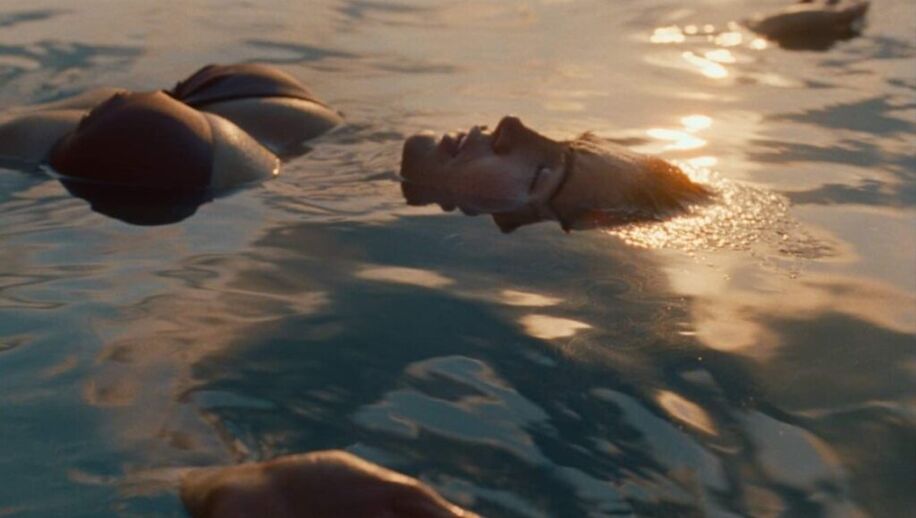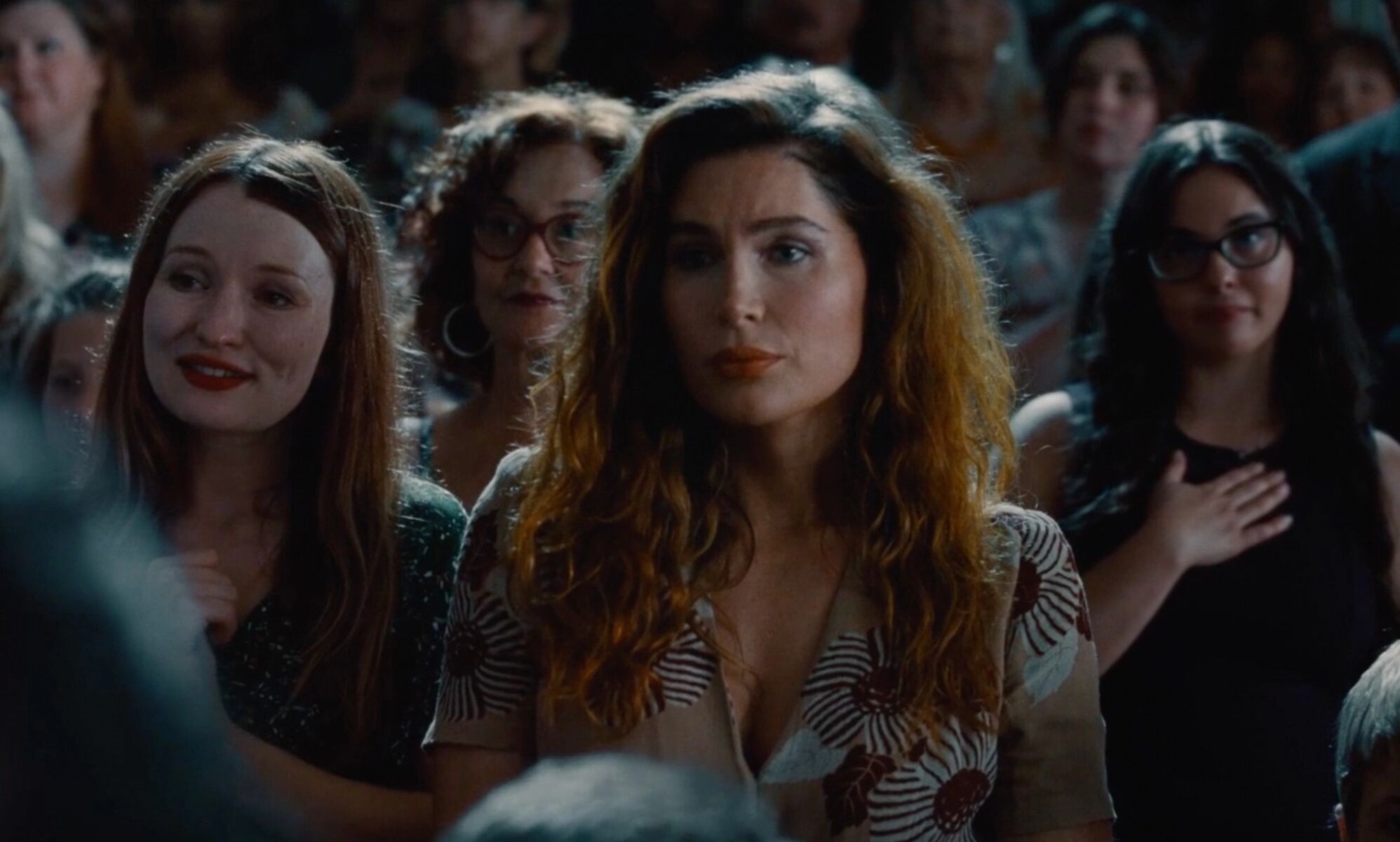Monica is a different kind of movie, as anyone whose seen it will tell you. It’s a homecoming story with special resonance for trans viewers, whose relationship to our families is often fraught, painful, and hard to visualize. Italian director Andrea Pallaoro doesn’t tell the story head-on, and neither does the camera. Throughout Monica, we see our title character from the back, out of frame, through a car door, from oblique angles. Sometimes we don’t see her at all, and that’s exactly how we end up really seeing her.
INTO spoke to Trace Lysette about her vulnerable performance as Monica, a trans woman traveling home to care for the dying mother (Patricia Clarkson) who rejected her as a teen.
INTO: I wanted to ask first, did you have any conversations with the director about the way Monica would be shot and framed? I found that aspect of it just visually really interesting.
No, not initially. That was something we discovered during production. I remember Emily Browning mentioning it once. I think she had seen either seen some dailies or snuck a peek at the monitor something and I overheard that it was going to be the square aspect ratio. And as far as the framing, I’m just so focused on the emotion and making all of that feel true and real that I didn’t really know how they were framing me most of the time. And I guess in hindsight, I would have maybe liked to know, but it’s hard. It’s hard to even dive into that as an actor because it’s not really my job. I just want to make sure what I’m doing is real. You know if my head is cut off in the scene, Oh, well! That’s a choice they made, I guess. Did you enjoy the confined kind of visual part of it?
Related:
In Which I Talk to Hannah Gadsby About My Girlfriend
Hannah Gadsby is a queer icon, which is why I spent my entire 5-minute press junket slot telling them about my girlfriend.
I did like it. At first I was sort of resistant to it. But then I was sort of like, “why do you want this to be just like a classic two-shot?” It made me ask questions about sort of what I expect from a story. And I feel like it made me really appreciate the moments when we could actually see you and the emotion on your face, like that the end. By the end I was just so emotionally invested. It feels like you’re watching something so private.
I guess that’s, in a way, Andrea [Pallaoro, the film’s director] giving me the highest compliment. He pulled me aside several times on set and told me how intense it was coming across, and that that was a good thing. And he was super happy and proud. And that made me feel good, but I’ll admit I didn’t quite understand his reasoning for all of that until I saw the final cut. Then I realized, “Oh, he wants it all to be in the emotion, in the unsaid, in the truth, without any preachy moments, and even at times without dialogue. Yeah. So in a way, it was kind of like, “oh, he had the confidence that I could get that across. So it was a wonderful journey and, and I guess, a learning experience for me.
Yeah, you get to understand this family through just their behaviors and the way that they express physical emotion, without that preachiness.
I think there’s any number of ways that could have went down, this story of reconnection, but I do feel like he went for a very realistic path and I appreciate that.
Then you get to the end and see her reaction and it’s the revelation, because it’s been so withheld from us.
Yeah, we talked about that after I watched the final edit. There were scenes where I was really blowing it out of the water, so to speak. I thought, oh, my face is definitely in the frame, and then I see the final cut and I’m like, “Oh, I was nodding and crying my eyes out for, for what?” But once he explained to me the withholding of the performance, it made more sense to me. Yeah. But I did have to kind of make my peace with it as a performer and as an actor. I had to make my peace with some of those scenes that either left on the cutting room floor or were shot from an angle that I just was not aware of. Like, there’s a scene early on right after I see Eugenia (Patricia Clarkson) For the first time in 20 years, and I go to the bathroom and I’m staring at myself in the mirror. And it was the first shot of production first day on set. I have to reckon with the fact that I’ve seen my mother who doesn’t know who I am for 20 years or whatever. And I’m full-on having a breakdown, emotionally, I pull myself together, I call Jimmy on the phone and get the voicemail and pull it back together before the voicemail, and then I make my way to the toilet and fall apart again on the toilet and I think you guys only got to see me sitting on the toilet. There was a whole other half of that. It was like a roller coaster that happened before that. And I think because it was shot straight on through the mirror, and it was just straight on my face. That was one of the ways he wanted to do the withholding, and kind of like letting it build. He had a particular name for what that’s called in film school but I can’t remember what it was. But once he explained that to me I understood better.
Those phone call scenes were so painful.
Right? Yeah, I had a lot of painful relationships in my 20s. I definitely pulled from those places. For better or worse, I’m learning how to utilize that pain now.
Do you think Monica stays with the family at the end?
I think that she’s found by the end. She found love and she found hope through her nephew, through him being effeminate and—spoiler alert—ending with him singing the national anthem, and and how patriotic that was. How timely that was for trans people. And I think she understood more of her purpose in life by the end of the film. That’s what I got from that last shot. It was like, “okay, I have enough now.”
Yeah, like, I have meaning in this universe.
Yes, like “I mean, something to my nephew. I mean something to this family. I can find joy elsewhere. Outside of a broken relationship.” I guess I didn’t really analyze whether I thought she stayed or not. Because my job is to just kind of be in the moment. But for me, what I cling to is just like, she found some purpose.

And also the beauty of just like—I feel like it’s rare to see movies where trans folks just get to have a nice day swimming with their family.
One of my favorite stills from the movie is when I’m sitting on the dock with the baby. You see me, and my womanhood is front and center because I’m in a bikini but I’m also holding a baby. Yeah, right. So my body—my transsexual body—is unapologetically in your face, and I’m holding an infant, and my family is swimming around me. I mean, to me, that says so much, and we don’t get to see that often.
It was an interesting choice, too, to not end on the death of her mother.
I was pleased with how it was handled.
Do you think her mother ever figured out who Monica was?
I think it’s kind of conveyed in the bathtub scene. When they’re staring at each other, and when Monica crawls in bed after her kind of night out at the bar. You know, it’s there. I feel like a lot of people run from confrontation and maybe they know that their time is limited. And they don’t want to waste it on that.
Totally. And some things are being said through touch.
Yes. There’s other ways to communicate and to just blatantly say something verbally. So I feel like it’s beautiful in that way and unique in that way. Yes. And I’m all about pushing boundaries, in art and in life in life in general.♦
Don't forget to share:
Help make sure LGBTQ+ stories are being told...
We can't rely on mainstream media to tell our stories. That's why we don't lock our articles behind a paywall. Will you support our mission with a contribution today?
Cancel anytime · Proudly LGBTQ+ owned and operated
Read More in Culture
The Latest on INTO
Subscribe to get a twice-weekly dose of queer news, updates, and insights from the INTO team.
in Your Inbox














